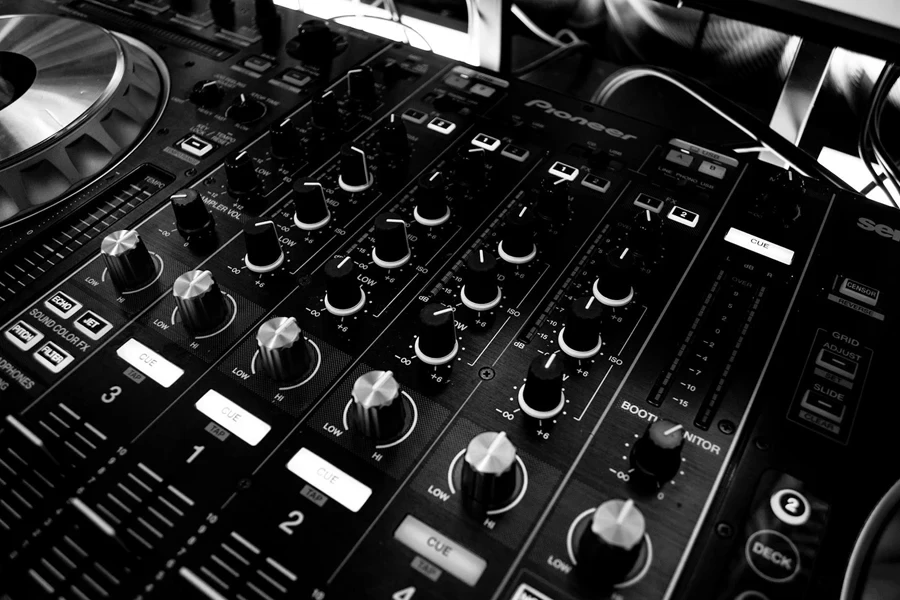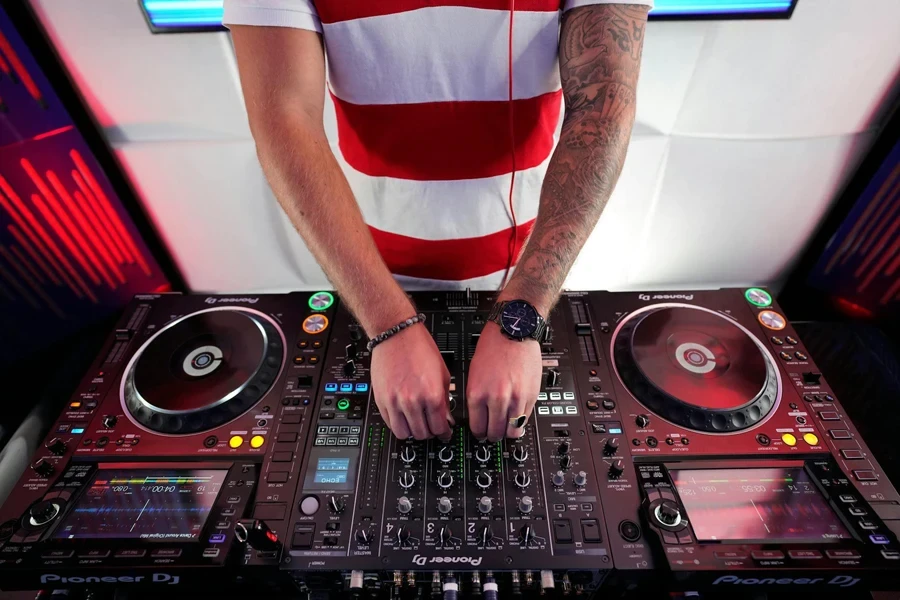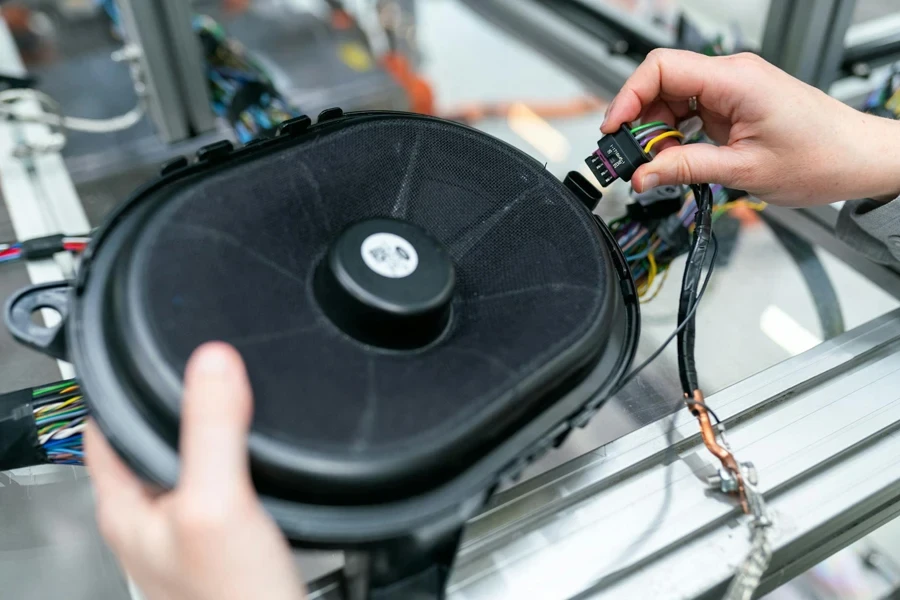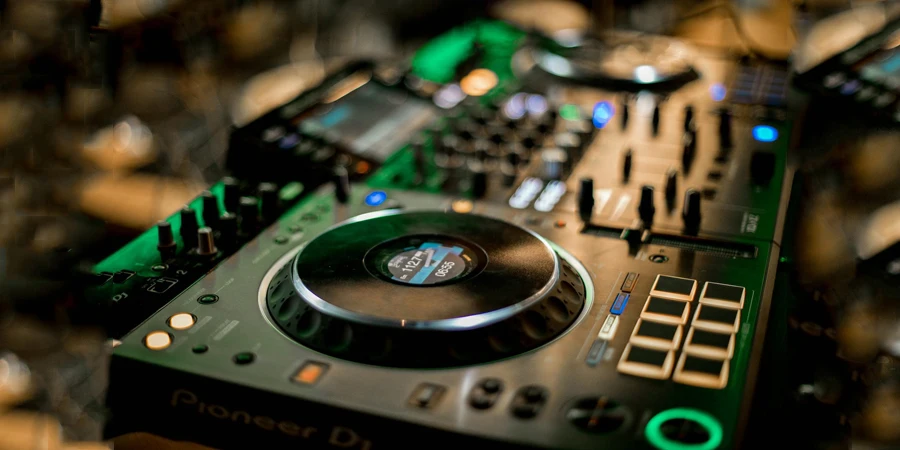Accessories used in the audio and video market are now compelled to extend coil flexibility and inherent superior mobility on the move. The demand for these products is growing quickly due to their continued technological improvements and increased adoption in different industries. This article will discuss the newest trends, various system categories, and key factors for choosing the correct products. These elements must be understood well for a business to be competitive and meet consumers’ demands. See the experts’ valuable information and novelties in audio and video accessories.
Table of Contents
● Market overview
● Different types and their features
● Things to consider when selecting products
Market overview

Market scale and growth
The global professional audio system market was estimated to be USD 2.3 billion in the year 2021 and is expected to grow to $5.1 billion at a compound annual growth rate of 8.5% from 2022 to 2031. Some forces that have boosted this growth include using such systems in business events, the need for the movie and music industry, and flexibility in renting such systems. The market by equipment is divided into microphones, speaker systems, power amplifiers, and mixing consoles. It is further classified into purchased usage and rented usage. For distribution, it is slightly classified into offline and online. Application includes corporate bodies, academic institutions, government, hospitality, etc.
Regional insights
Region-wise, Asia Pacific has a high Market share, while North American and European regions also influence the market strongly. The market by the businesses involved in the hospitality industry, where they adopt live performances and stage shows to lure consumers, was headed by in 2021 and will record significant growth. The need for good quality audio to choreograph music events, corporate and other business events taken together with the healthy film and music industries is market enough for the product. Some venturesome opportunities likely to impact the overall market growth during the forecast period include High Definition and Ultra High Definition sound quality, Wireless Fidelity, also referred to as Wi-Fi, and Bluetooth, among others.
Different types and their features

Personal PA systems
The personal PA systems are small, have blaring capabilities, and are recommended for single or sometimes group usage. Such systems often consist of two 10-inch active PA loudspeakers with integrated amplification and an average power of about 200W. Some models have battery power choices and can be used for street performances and small meetings. Sophisticated models of personal PA systems can come with additional features such as Bluetooth capability, integrated mixers with equalizers, microphone feedback adjustment, and reverb designs to improve sound quality.
Medium-sized PA systems
Medium-sized PA systems are more powerful and have more features and capabilities for large indoor and small outdoor uses. These systems typically consist of one or two 12-15 inch mains speakers, monitor speakers, 1000-watt power amplifiers, stage monitors, and so on. They accommodate two or more inputs for microphones and instruments with inbuilt DSP for the audio signals. Suitable for marquee hire or catering for a wedding banquet, they offer coverage equalization and attenuation control.
Full-scale PA systems
Full-scale PA speakers are suited for giant halls, concert and rally meetings, outdoor musical concerts, etc., as they afford the more compassed sound quality. Some of these systems require a network of speakers with subwoofers of 18 inches, full-range line arrays, and centralized amplifiers with up to 10000 watts of power. They have sophisticated audio gadgets, including digital mixers, wireless microphones, and signal processors, all of which an audio engineer controls. This makes the distribution of the sound and the clarity of the music or the voices powerful in large areas suitable for outdoor national festivals and other large congregations.
Portable PA systems
Portable PA systems are highly mobile and are available in different sizes. They may come with both wired and wireless options. Such systems comprise speaker sizes of 8-10 inches, complete with a 300-watt amplifier and rechargeable batteries that can work for 12 hours at a stretch. They include Bluetooth, USB/SD card inputs and facilities, and a mixer with several input channels. These systems are suitable for use in presentations, outdoor occasions, and small halls and auditoriums because they are portable and easy to install.
Fixed PA systems
Fixed PA systems are permanently installed and offer precise sound projections for a particular hall. These systems consist of ceiling or wall-mounted speakers, network-attached amplifiers, and digital signal processors. Its advantages are high sound quality and the possibility of adjusting the volume, which can include automatic feedback canceling, the chance to control different zones for different rooms, and the integration with the already existing AV systems. Organizations such as churches, schools, and large gathering places are suitable for these systems because they guarantee steady and quality audio.
All-in-one mobile PA systems
All-in-one mobile PA systems have speakers, mixers, and microphones integrated into one. These are mostly portable and offer about 500 watts of amplification. They come with 10-12-inch speakers, integrated mixers, and wireless mics. They are easy to set up and need very little cabling with effects such as reverb and equalizing controls on the head. They offer great flexibility for music and voice applications, especially suitable for musicians, DJs, and mobile fitness trainers.
Mini PA systems
Mini PA systems are the smallest of the PA systems and are designed to be truly portable. They feature a powered speaker that will include a basic mixer. Such systems feature 6-8 inch speakers with an output of approximately 100 Watts of power and integrated rechargeable batteries for up to 8 hrs of use. These are intended for small meetings and individual purposes, so they are minimally complex and easily portable. Certain models are available in wearable form, allowing the user a free hand during presentations or the case of fitness instructors.
Studio PA systems
Studio PA systems are generally portable and designed for indoors, although some outdoor specifications are available. These systems incorporate powerful studio monitors of good quality, bi-amplified ones with quality 5-8 inch speakers that give accurate sound reproduction. They include digital/analog input/output, high-end DACs (Digital to Analogue Converters), professional-grade mixing desks, and sound-manipulating equipment such as EQs and compressors. Perfect for use in recording studios and compact live performances, they present an excellent acoustic response with a significant focus on clean and sharp sound suited to indoor environments.
Things to consider when selecting products

Venue size
The capacity of the place defines what amount of power is to be outputted and how many speakers are necessary to cover up the place’s area. For instance, the big hall arenas and outdoor festivals require big power ranging 5000-10000watts, multiple 18-inch subwoofers, and full range line elements for adequate coverage; for smaller hall conference rooms, compact systems with a power of 200 to 500 watts and 10 inches will suffice.
Portability needs
In situations that require frequent switchovers, it’s preferable to have light and portable systems. Light-weight PA systems vary in the use of comparatively small 10-inch active speakers, which come with built-in amplifiers that provide approximately 300 watts in each channel. Some of the more complex varieties have collapsible handles and wheels that are transportable. The cordless models have battery backup and offer up to 12 hours of running time for mobility in case of outdoor or off-site functions.
Sound quality
High-fidelity sound is important for professional sound production and recording. Choose products with integrated Digital Signal Processing consisting of real-time feedback elimination, equalization, and sound control. High definition or HD sound and ultra HD sound, per the sampling rate of up to 96kHz, provide clear and powerful sound, especially if it is studio PA systems for recording and small live performance sessions.
Power source
Portable battery-operated systems are versatile and indispensable for staged occurrences that regularly lack stable, accessible outlets. Most of these systems deploy lithium-ion batteries, which offer reliable current and are comparatively easier to recharge within 3-4 hours. AC or mains-powered systems are directly connected to the mains supply and are fine for fixed installations with a constant supply of electricity. Systems with two electrical power sources – batteries and the main supply – give greater possibilities.
Connectivity options
Modern PA systems require endless connectivity to address any form of audio input. Most systems should have multiple inputs, including XLR, TRS, and RCA for mics, instruments, and players. Top-tier models can also connect to Bluetooth for wireless streaming, have USB input for direct playback from flash drives, and support digital audio networking protocols such as Dante or AES67 if the situation requires multi-area audio over IP.
Audience size
The PA system should correspond to the number of people present or expected to be in attendance. For huge crowds, systems should also have powerful amplifiers of as much as 10,000 watts and many speakers and subwoofers to cater to as large an area as possible. For smaller audiences, it can be used in systems with a lower power of 300 – 500 watts and many speakers to give the sound clarity at the most intimate level.
Durability and reliability
Touring, as well as outdoor systems, should be extremely sturdy and accurate. Weather-resistant enclosures on the speakers, internal parts that can easily handle shock impact, and oversized connectors are some of the characteristics that have been put in place to allow for durability. One should look for units with cooling fans and thermal protection circuits for cool working without interruptions for fixed installations.
Ease of use
The input interfaces should be easy to use, which minimizes the time taken to set up the system and technical hitches. Coaxial systems are most preferred, and most should/should come with digital mixers and touchscreen interfaces. They should also allow preset options for easy setup and control through smartphone apps. Some are portable, like the all-in-one or mobile PA systems, where the loudspeakers, amplifiers, and microphones are in a single package. Hence, the process of installing the equipment is easy.
Conclusion

Cables and connectors for audio and video are essential for a contemporary consumer and a professional; they are flexible and, in most cases, provide good enough quality. Achieving the goals set for the current market, familiarizing oneself with the system types, and considering the key selection criteria are cardinal things that one needs to consider. Thus, it will be possible to achieve the highest quality of audio experience for the businesses and improve the outcomes of their events and other activities.




